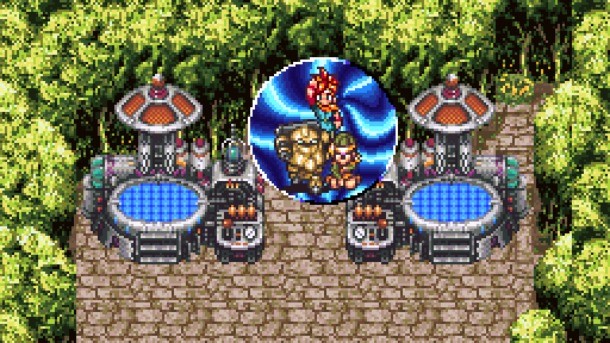Please support Game Informer. Print magazine subscriptions are less than $2 per issue
Attention to Detail: 10 Things That Make Any Game Better

Great ideas are the foundations of great games, and no one can deny that developers today create many entertaining concepts. Even so, sometimes the simple things get overlooked. Every gamer has stopped in the middle of playing and wondered why a developer failed to include an obviously useful feature. Not better loot, different powers, or other game-specific adjustments – we’re talking about top-level interface, design, and usability decisions. These 10 features should be in every game, minimizing confusion and maximizing your ability to customize your experience. All of them are possible, and have been implemented in multiple titles already; now we want to see them consistently applied and standardized across all genres.
This article originally appeared in issue 235 of Game Informer.
1. Control Customization:
Developers try to find the optimal control scheme for their own games, but the default solution doesn’t work for everyone. Maybe you like the dash and jump buttons reversed, or maybe you have a physical disability that makes the default options impossible to use. Whatever the case, console games -usually don’t offer the option to tune the control scheme to your liking. Sometimes gamers want to do more than just invert the Y-Axis, and there’s no good reason why we aren’t given that freedom.
Be like: PC games (Half-Life 2 pictured above)
Not like: Most other games
2. Good Autosaving:
Gamers don’t like losing progress. That’s why a decent autosave system is a necessity in any modern game. Once upon a time, managing your save file was part of the -challenge, but those days are gone. Whether you enter a new area, finish a tough fight, sell some items, or just allocate some skill points, the autosave should kick in. Of course, gamers should still have the ability to manually save whenever we want, but replaying 20 minutes of previously completed content shouldn’t be the penalty for forgetting.
Be like: Saints Row: The Third
Not like: The Elder Scrolls V: Skyrim

3. Pausing Cutscenes
Uninterrupted gaming time is great, but sometimes we have to deal with phone calls or other unforeseen distractions, and we don’t want to worry about whether trying to pause the game will result in inadvertently skipping a story-critical cutscene. Here’s how this needs to work: When you press start, whatever is -happening on the screen pauses. Dialogue? Cutscene? Big-budget rendered cinematics? All paused, not skipped.
Be like: Castlevania: Lords of Shadow (pictured above)
Not like: Grand Theft Auto IV
4.Skipping Cutscenes
Let’s say that you don’t want to pause a cutscene – you want to skip it entirely. This should be an option from the pause screen, where an extra button press lets you skip over whatever non-interactive part you may be watching (including regular dialogue). This option should be available whether or not you’ve already seen the event in previous playthroughs or attempts. Some people don’t care about the story, and others don’t want to scroll through the same conversation multiple times as they try to beat a challenging section.
Be like: Metal Gear Solid 4: Guns of the Patriots
Not like: The Legend of Zelda: Skyward Sword
5. Brightness Adjustment
Video game artists spend their time making worlds and characters look as good as possible. Unfortunately, televisions don’t display these graphics exactly the same way. To play the game as the designers intended, we need two things: in-game brightness adjustment and a reference image to ensure the brightness is set properly. Ideally, the game should prompt us to optimize these settings right away, but placing it in an options menu is also acceptable. If you make us manually adjust the brightness on our television instead, you’ve totally blown it.
Be like: Mass Effect 3
Not like: Metroid: Other M
Next: Captions, DRM, and tutorials...

6. Reward Subsequent Playthroughs
Gamers spend hours grinding levels, earning weapons, and finishing side quests, but sometimes we still want to keep playing. An option to carry over an end-game save to a brand new playthrough can breathe new life into subsequent runs. Maybe all of the items and stats are transferred, or maybe just some extra bonuses and unlocks. Anything is better from just starting over from scratch. Yes, this may disrupt (or completely break) the game balance, but if we’ve already beaten it, is that really a problem?
Be like: Chrono Trigger (pictured above)
Not like: Dragon Age: Origins
7. Decent Captions
First and foremost, deaf gamers require subtitles in order to play and understand a game, so that should be enough to standardize this feature. For everyone else, it helps to be able to read names and places – especially if a game is set in some crazy fantasy universe. Maybe keeping the volume down will avoid disturbing people nearby. Either way, just adding text for what characters are saying isn’t enough; it needs to be synced properly so we aren’t reading words before they’re said, and it should be attributed to the character speaking (or color-coded) to avoid confusion. As video game stories get more complex, being able to read every word ensures that no one misses out on the action.
Be like: Portal
Not like: Singularity

8. User-Considerate DRM
Piracy is a problem, and video game publishers are trying to fight it. Unfortunately, some methods seem designed to punish people who actually buy the game more than those who try to steal it. Always-on online connections, especially for single-player games, cause big problems (and lost -progress) with the slightest connection hiccup. We’re not saying that publishers don’t have the right to protect their product, but it shouldn’t come at the expense of the paying customer. It hurts the people who want to support the game most, and that isn’t acceptable.
Be like: The Witcher 2: Assassins of Kings (pictured above)
Not like: Ubisoft circa 2011
9. Cut Back on Tutorials
We have accepted the fact that games may never come packaged with hefty manuals again. The problem is that some games are making up for it by including massive tutorial sections early on instead of letting players jump into the action. We shouldn’t have to set aside a three-hour block every time we want to start a new game just to get to the point where our hands aren’t held. An interactive in-game manual could bear some of that weight, letting us -practice skills if need. If tutorials are necessary, keep them short and unobtrusive. Gamers aren’t idiots, so have a little faith in our intelligence, please.
Be like: Braid
Not like: Final Fantasy XIII
10. Credits
This one has three parts. First, all games should have credits at the end – not just kick you back to the title screen. Seeing the action fade out and the credits roll is a great chance to decompress and reflect on the recently conquered game. Second, developers need to carefully consider who really needs to be in the credits; the idea is to give due credit to the people who created a game, not every single person in a multi-national corporation. Third, give us the ability to skip (or speed through) the credits is a must. Not that we will skip them every time, but long credits can easily add 20 minutes to a gaming session, which is a lot if things are already running late or if you’ve already beaten the game several times.
Be like: Super Smash Bros. Melee
Not like: Assassin’s Creed Revelations










